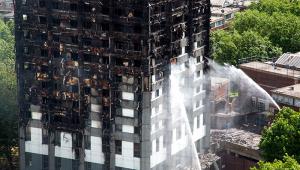
In last week’s much-anticipated final report of the Independent Review of Building Regulations and Fire Safety, Dame Judith certainly didn’t pull her punches in describing “a culture of indifference” and “a race to the bottom”.
However, the report received somewhat mixed reviews. A lot of the media focus was on what it didn’t contain – an outright ban on combustible cladding and a ban on desktop studies in lieu of testing.
However, the report did include many positive recommendations so it’s worth taking a bit of time to reflect on these.
We know the Grenfell Tower fire raised a number of further, much broader questions about the accountability of landlords to their tenants and how tenants’ voices can be heard on both a local and national level so it was really positive to see a chapter focusing on this issue.
As well as some sensible recommendations that address issues directly related to assurance and accountability on fire safety the review actually went much further.
It was interesting to note a call for government to provide funding for organisations to provide advice, guidance and support to residents and landlords on effective resident involvement in order to develop a national culture of engagement for residents of all tenures.
The introduction of a new regulatory framework – the Joint Competent Authority (JCA) – seems another sensible recommendation.
Some of the biggest issues highlighted throughout the review were the confusion of roles and responsibilities throughout the life cycle of buildings from design to maintenance; ambiguous regulations and guidance; and poor compliance. The JCA will play a central role in addressing these issues and a wider role around addressing systemic issues around culture and behaviours.
However, the report did include many positive recommendations so it’s worth taking a bit of time to reflect on these.
We were pleased to see the recommendation to introduce a dutyholder role at each stage of the process of design, build and occupation.
One of the issues raised time and again was the confusion about the role and accountability of the “responsible person” (introduced under the Regulatory Reform (Fire Safety) Order 2005).
The dutyholder role at each stage will ensure handover of relevant and vital information on fire safety throughout the lifecycle of a building and provide a named, accountable contact with clear duties and responsibilities.
Housing providers should start thinking about whether they want to nominate/recruit a “building safety manager” who can support the dutyholder role.
Finally, I’d like to focus on competency.
It is fairly shocking that both the interim and final report concluded that there is a lack of skills, knowledge and experience of those engaged in the whole life cycle of higher-risk residential buildings from construction to occupation.
We need to think about the role of housing professionals in this debate.
We are responsible for managing buildings – do we have the right knowledge and skills? How can we ensure our knowledge remains up-to-date and current?
How is it evidenced? And for CIH, as the professional body, we need to think about how we support housing professionals to have the relevant competencies, knowledge and skills.
We need to remember that the review presents a set of recommendations to government – it will be up to them what recommendations they take on board and indeed, how they will be implemented.
While there are things that can be adopted immediately, if accepted by government, many of the recommendations will involve legislative and/or regulatory reform.
So, we need to think carefully about what we do in the interim to reassure residents and ensure that our buildings are safe.




















